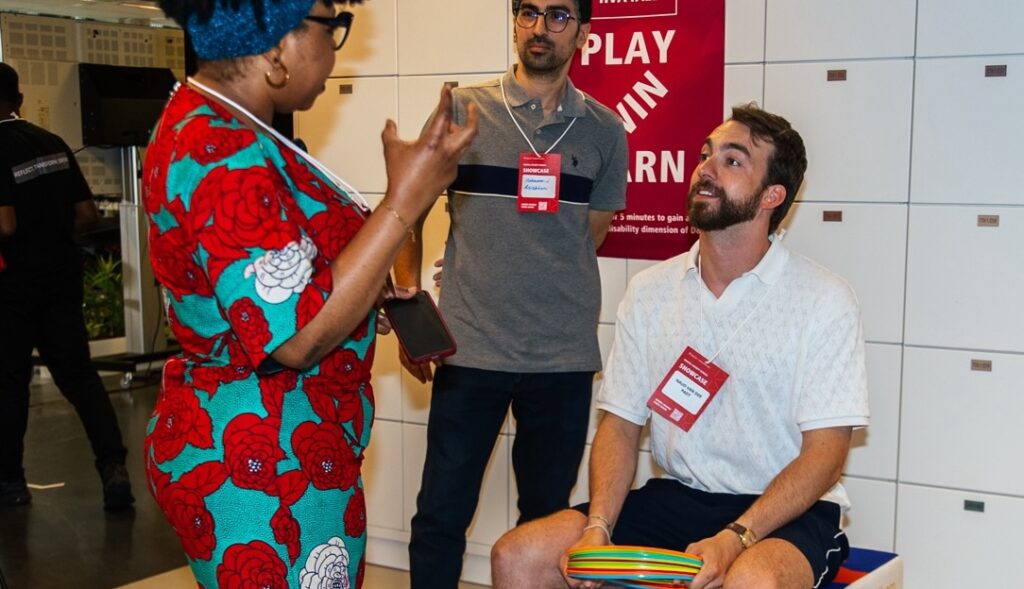Article
The Smart Talking Plant Pot
This article is the continuation of the following series:
Main Project Entry: Heat Resistant Cities 2 – Digital Society School
Blog Entry 1: Discovering the problem: Heat resistant city and Home owners – Digital Society School
The Problem
Due to climate change, the number of yearly hot days is increasing every other year. This issue is most pressing in cities, which are hotter than their suburban and rural counterparts. Night-time heat stress is a health risk at home when human bodies also can’t cool down.

Human health is greatly affected by extreme temperatures. Heat waves impact the ability of people to use and enjoy public spaces and have impact on their health at home. If night-time temperatures don’t go below 25°C, serious health issues can occur, especially for young children and elderly. During heat waves, admissions to hospitals including emergencies, and death rates increase dramatically. In the Netherlands, a 12% increase in mortality rate is recorded, which equals 40 more deaths per day [1]. A heat wave in 2003 in Europe resulted in 45.000 additional deaths. Furthermore, it is interpreted that number of heat waves will increase in the near future, with more intensity and longer-lasting durations. [2]. Some studies say temperatures in urban areas of the world can rise by 8°C by 2100 [3]. It’s time to respond to climate change to support sustainable cities and communities.
The Campaign
Working in ‘Digital Society School’ and in partnership with ‘Municipality of Amersfoort’ and ‘TAUW’ company, as the ‘Heat Resistant Cities 2’ group, we were assigned to focus on homeowners’ issues with the invisible heat stress effect. How can we turn this invisible effect into visible and raise awareness?
We interviewed homeowners in their homes to get insights about their situation, academic experts to broaden our understanding of the topic and get feedback, and made desk research to see the situation in different parts of the world. After processing what we learned, we came up with a campaign that’s founded on raising awareness in the homes, while also creating more shade in the city by planting trees.
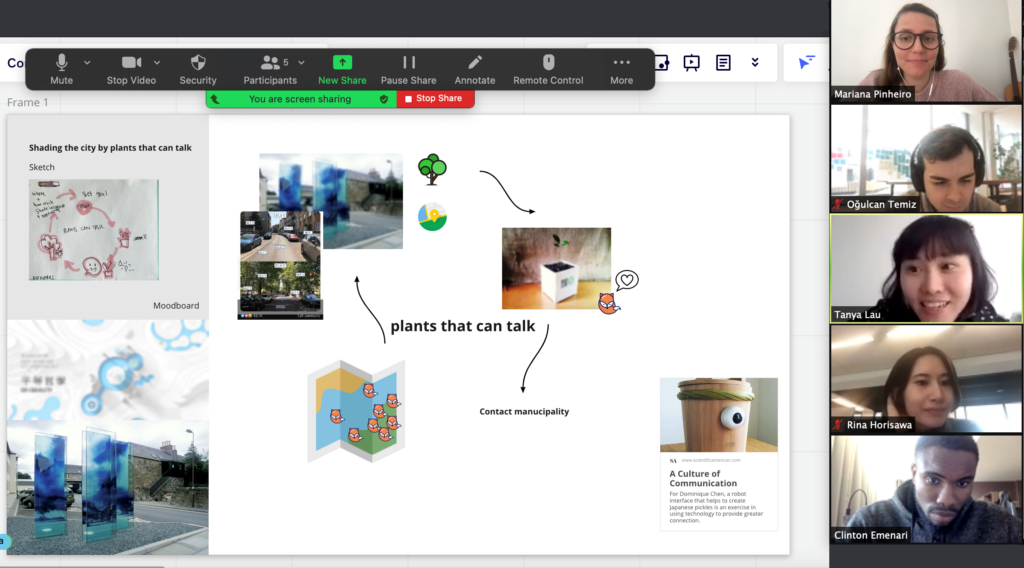
Our campaign incorporates features of,
- Raising awareness of people against heat related issues,
- Motivating people for caring about the environment, climate, and their own well-being,
- Giving people the ability to act,
- Establishing a human-nature connection,
while it
- Is fun & enjoyable,
- Promotes collectiveness of different communities of people,
- Provide people with instructions to tackle actions
These features are collected in a ‘smart plant pot’ and a ‘website’ togetherness.
The Smart Plant Pot
Think about the old days when Tamagotchi was so popular. Remember how it acted like it was your own child, desired care, grabbed your constant attention, and let you look at it in a different way than your other toys. Now, attach that Tamagotchi to a plant, and you have a plant that’s creating a visible connection to you.

Concept Smart Plant Pot Prototype
With the smart pot, the users would be able to monitor the temperature inside their houses during the daytime & night-time and give specific advice like telling them to drink more water, closing the windows or blinds, etc. This would raise awareness of the users against heat stress and take measures.
The smart plant pot also detects ambient humidity, requests water, gets online predictions to prevent your house from heating up, shows notifications from the municipality, aids scientific organisations with recorded temperature recordings to tackle climate change topics, and more.
When the plant is big enough to be planted in the city, the owner gets notified, and the plant gets transported to the planting area. The website shows the location of the plant.
The Website
The website is the starting point of the campaign. It would be conveyed by using public communication like billboards, flyers, digital ads, schools, etc. Users get their initial heat wave awareness from there. It also instructs how to get a smart pot. It is designed in a way to be able to get understood and used easily by a wide variety of audiences among the citizens.
The website,
- Explains about urban heat island effect,
- Shows cause and effect comparisons between past and future scenarios of how greening affects the city,
- Demonstrates features of the smart pot and how it will benefit the users,
- Calls users to action to join the campaign and shade the city together in step-by-step instructions,
- Shows the planted tree map,
- Has FAQ and PDF handbook section about what citizens can do to take care of themselves and their plants,
- Shows the current contributions and progress on a real-time data map, with a digital twin map of current trees, digital diaries written on trees by their past users, and temperature in each location in the city.
- Has the profile section of each user with Tree ID, journey tracking, and digital diary.
Screenshots of the website are added below after the User Journey Map section.
User Journey Map
The campaign details, more features, and the pathway are detailed step-by-step in the user journey map below for better visualised information.
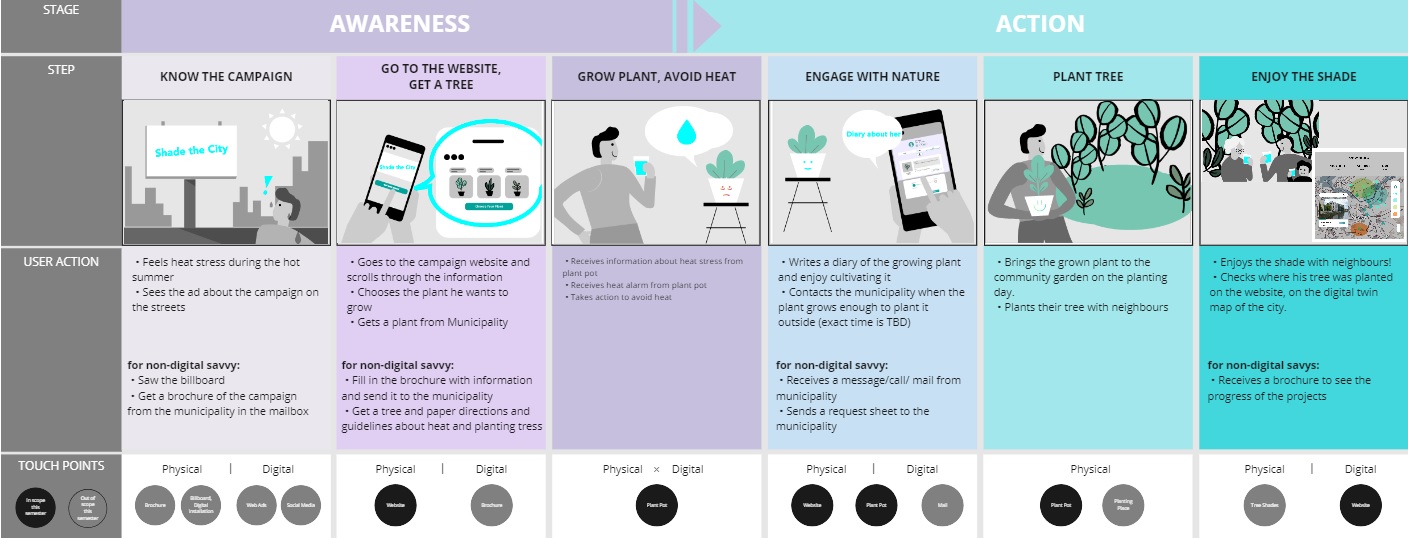
User Journey Map
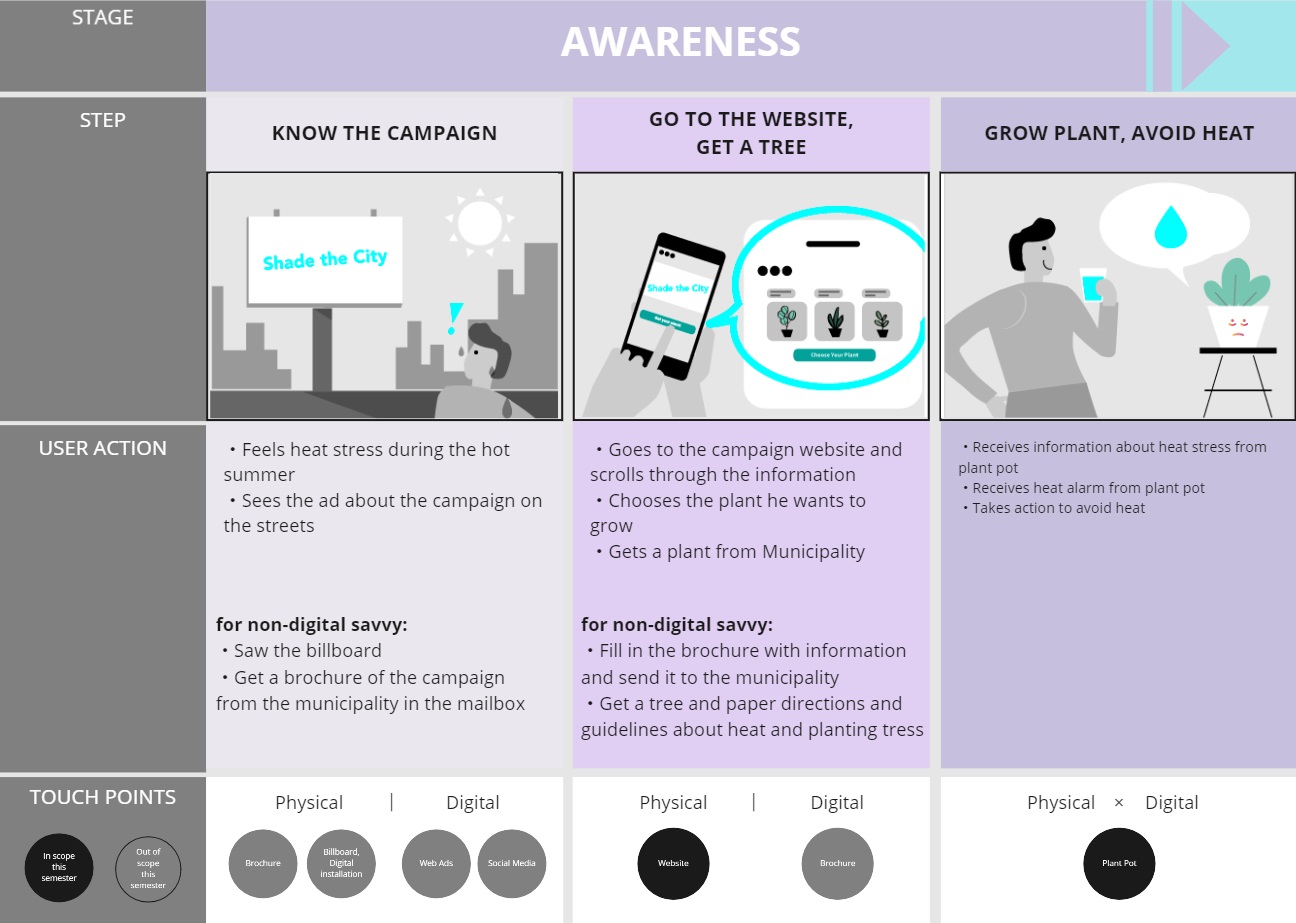
Awareness stage of the user journey map
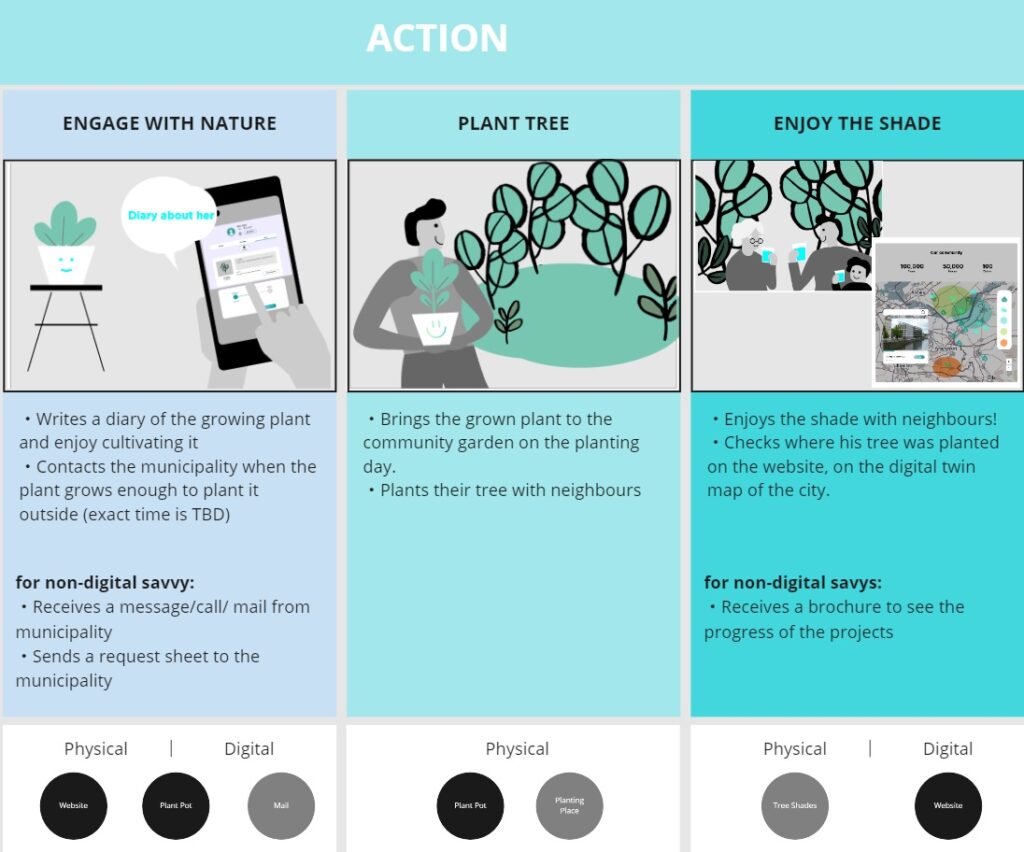
The ‘action stage’ of the campaign initiates by the users registering the form on the website to get their own baby tree in the smart pot.
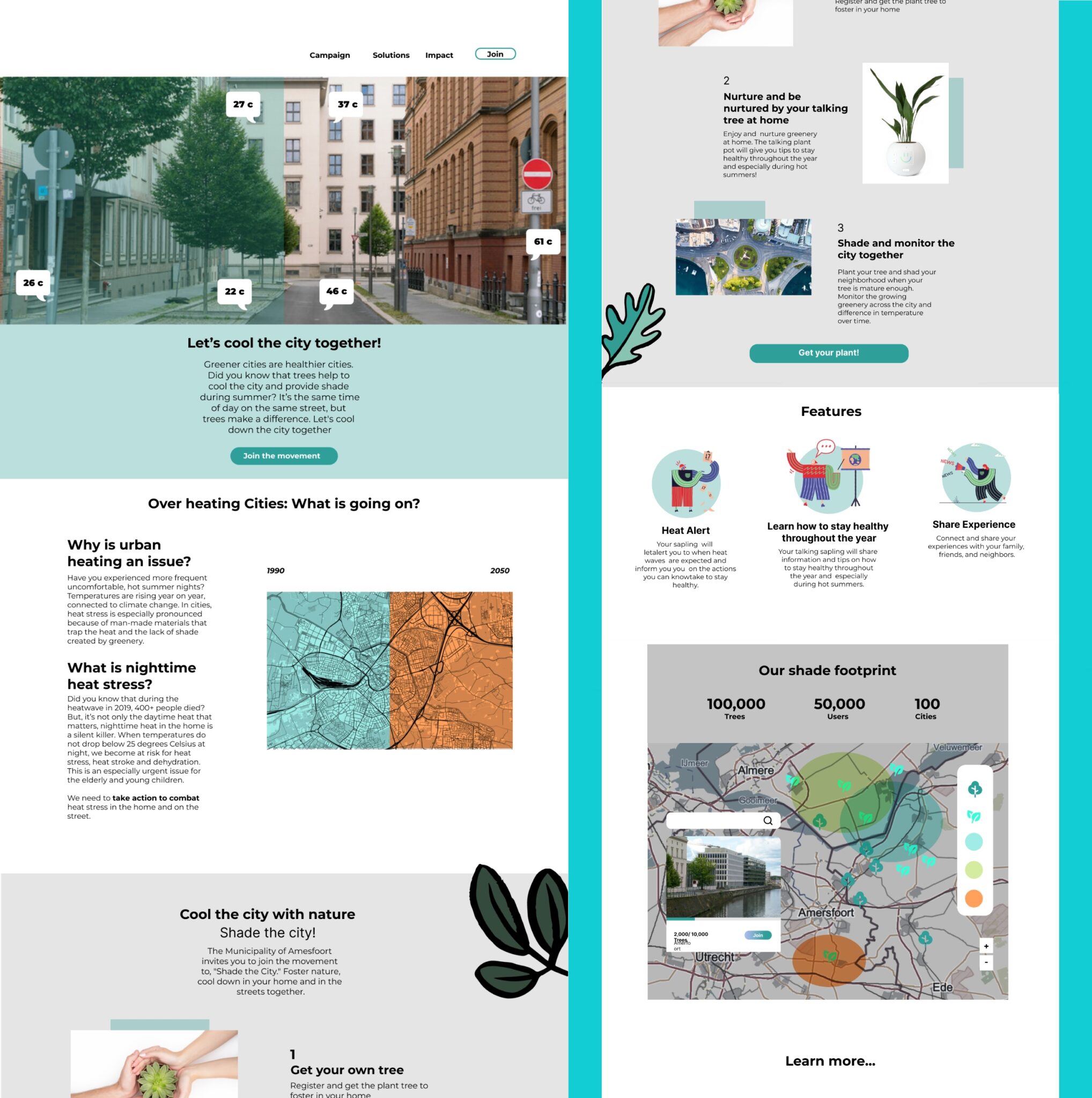
The Website

User profile section of the website. After users registered the plant, they will receive the Tree ID and the steps to take. They will see the history, info of the tree, etc. When the tree grows up and the time comes to relocate the tree, they will get a notification for the next step.

After the plant is relocated from the house to the city, users can see its location.

During the journey, users can write diaries about the plant and can share them with others within the data privacy consent. When the plant grows up to a tree and it is not with the users anymore, users can still write to the tree they miss.
Partners
Our clients for this project are the Municipality of Amersfoort, HVA, and TAUW, a Dutch consultancy and engineering firm (that gives environmental advice on the sustainable development of the living environment). In collaboration with our partners, we are aiming to raise awareness among citizens to take action for the issue by using the technology of “Digital twin of a city”.
This project focuses on the following Sustainable Development Goals (SDGs):

PROJECT TIME FRAME
- Feb 2022 – Jun 2022
PART OF TRACK
- Digital Twin
PARTNERS
- Municipality of Amersfoort
- TAUW
TEAM MEMBERS
Click for LinkedIn Profiles
- Clinton Emenari
IT Engineer

- Rina Horisawa
Design Researcher

- Tanyatorn Lauwanichpat
UX Designer

- Oğulcan Temiz
Generalist

Bibliography
[1] Knowledge for Climate (KfC). (2015). Climate Proof Cities – Final Report. Knowledge for Climate (KfC). Retrieved from https://www.researchgate.net/publication/274390866_Climate_Proof_Cities_-_Final_Report
[2] Steeneveld, G. (2015). New method to manage heat stress in cities. Wageningen University. Retrieved 6 June 2022, from https://www.wur.nl/en/newsarticle/new-method-to-manage-heat-stress-in-cities.htm#:~:text=During%20heat%20waves%2C%20mortality%20has,more%20intense%20and%20longer%20lasting.
[3] Agence France-Presse. (2022). Climate change could make cities 8°C hotter – scientists. The Guardian. Retrieved 6 June 2022, from https://www.theguardian.com/environment/2017/may/30/climate-change-could-make-cities-8c-hotter-scientists.

